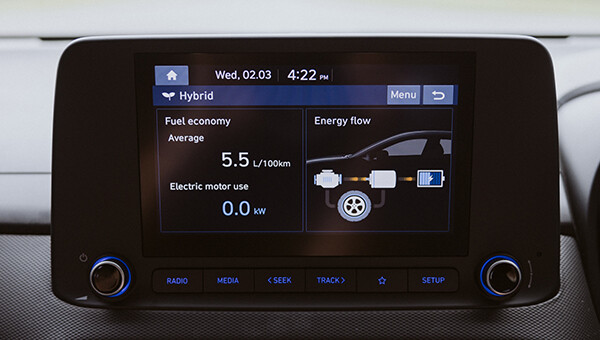Most of us want to do the right thing for the environment, and also our pocket book. We also know it can be confusing with all the options of lowering your carbon footprint from hybrid car models, to fully electric vehicles and so on. We are here to give you quick, simple facts to help you make the right decision for you and your family.

What is a Hybrid Vehicle?
As the name suggests, a Hybrid vehicle is built with the idea of combining the best of both worlds; fuel and electric. This means that although the vehicle uses fuel to drive it does not rely on it for 100% of its power. The electric components of the vehicle were created with the intelligence to bypass the use of fuel in certain situations and automatically switch to electric mode. This function maintains the vehicles power and saves fuel. One of the best parts, you do not have to worry about setting up a home charge system or stopping on a long trip to charge. The hybrid vehicle is charged through regenerative breaking by the internal combustion engine.
Hyundai New Zealand Offers a Variety of Hybrid Vehicles
What is an Electric Vehicle (EV or BEV – Battery Electric Vehicle)?
Electric vehicles are made to function with no fuel whatsoever. They have a built in battery system that powers the vehicle, and are commonly referred to as BEVs or battery electric vehicles. There are many attractive features to BEVs, but most notably may be that they produce zero carbon emissions due to operating entirely from electricity power stored in the vehicle’s battery.
That being said, the BEV does require that you plug into an electricity source to recharge. EV owners often charge at public charging stations, in car parks when shopping or dining or at work, or from an at-home charger which can be easily installed at most homes. While electricity isn’t free, it is less costly than paying for fuel with total overall running costs. According to the EECA “Charging your EV during off-peak hours is equivalent to paying 41 c/litre of fuel. The average charging rate (during the day) works out to be the equivalent of 80 c/litre.”
Hyundai New Zealand has a Range of Fully Electric Battery EV’s
What is PHEV or Plug-in Hybrid Electric Vehicle?
A plug-in hybrid is similar to the hybrid explained above except that but also more like a battery electric vehicle. The vehicle is equipped with both an electric motor and a larger battery that can connect to an external power source for full charging, enabling the PHEV to drive considerable distances solely from the onboard battery’s charge. It also has a combustion engine that uses fuel, if needed, which powers the vehicle and works to recharge the battery.
The brilliance behind the PHEV is that, for shorter commutes, you could rely on the battery power alone. But, for that long-weekend trip to the mountains or beach, you’ve got the petrol engine to keep you going for hundreds of k’s without stopping to charge or refuel. It is an ideal option for someone who has a diversity of driving needs but also desires a low fuel consumption and better savings at the pump.
Hyundai Offers a Variety of PHEV Vehicles
Deciding on what type of vehicle is right for you and your lifestyle is a big decision. Continuing to learn and collect information is the best way to decrease the stress that can surround this decision. Hyundai NZ has created this Quick Guide to Electric Vehicle video to help.
When you are ready, Hyundai offers free, no commitment test drives all over New Zealand to help you make the decision that is right for you. Book your test drive today.